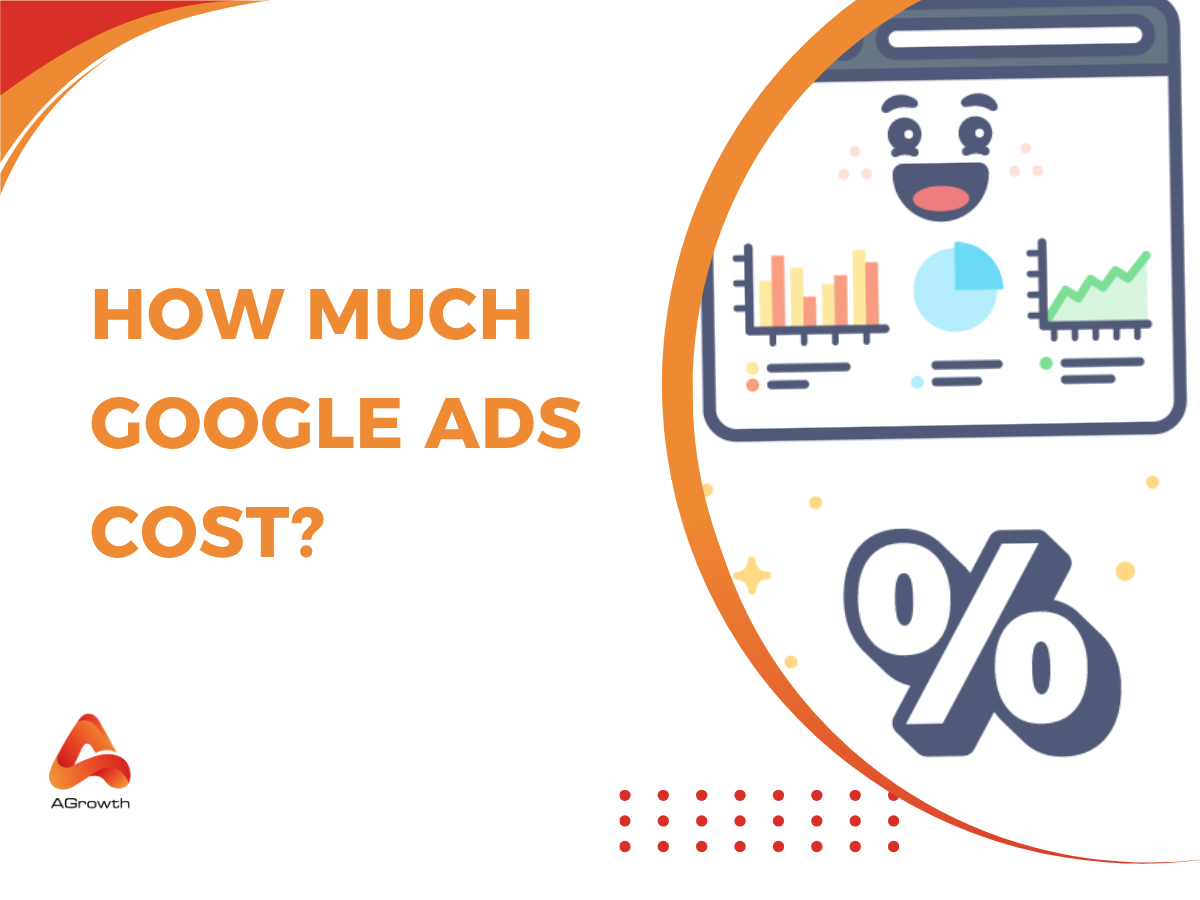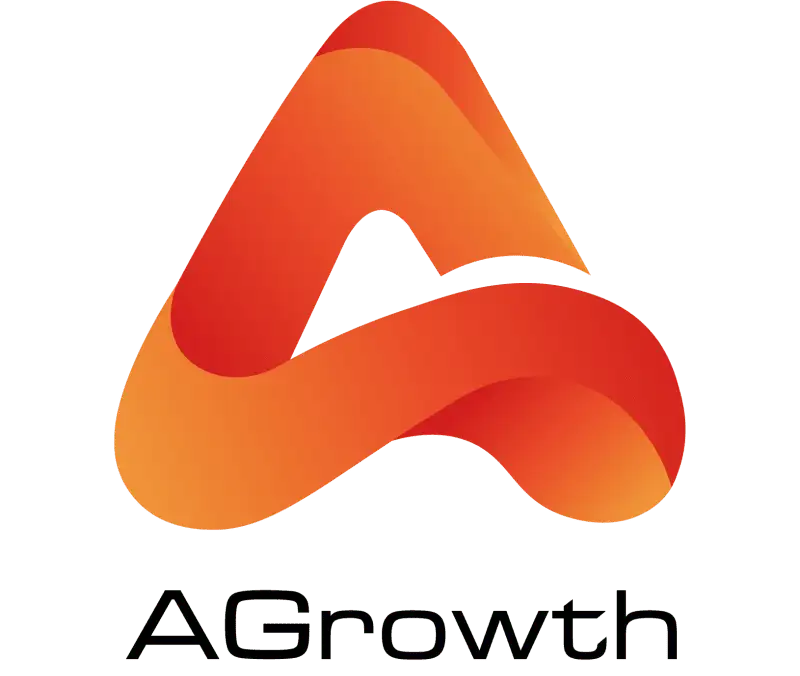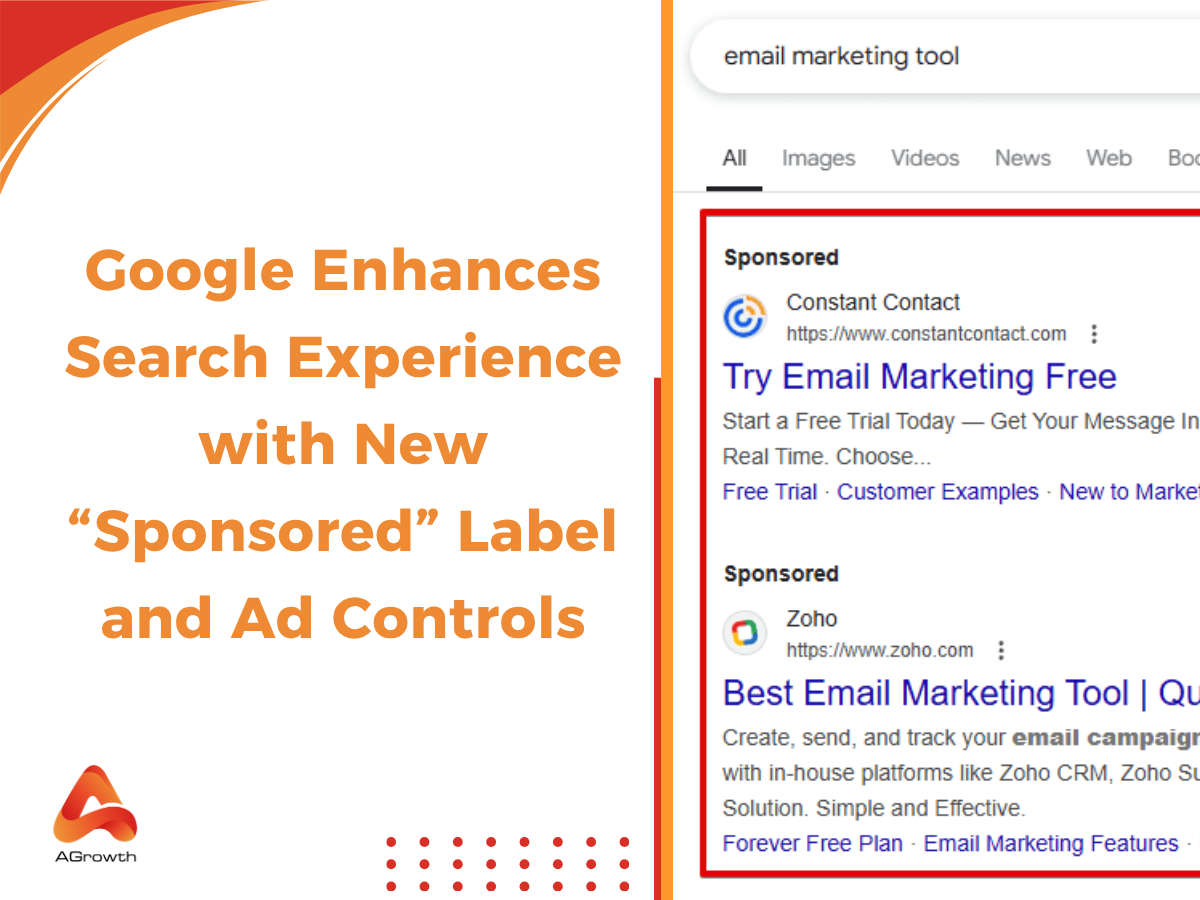
Table of Contents
Google Ads Cost 2025: Average CPC, Budget & Pricing Explained
Navigating the world of online advertising can be overwhelming, especially as digital competition grows year after year. In 2025, businesses face rising expectations for visibility while balancing tight marketing budgets. Google Ads remains one of the most powerful tools for reaching customers, but understanding what influences its cost is key to using it effectively. Without a clear grasp of how Google Ads pricing works, it’s easy to overspend or miss opportunities to optimize campaigns.
In this article, we’ll break down what you need to know to plan your Google Ads budget strategically. Here’s what we’ll cover:
-
What is the average cost of Google Ads in 2025?
-
What factors determine Google Ads cost?
-
What is the role of CPC in Google Ads cost?
-
How to calculate and estimate Google Ads costs
-
How small businesses can spend effectively on Google Ads
By the end, you’ll have a complete understanding of what drives Google Ads pricing, and how to make smarter decisions for your campaigns.
What Is the Average Cost of Google Ads in 2025?
In 2025, the average cost of Google Ads ranges from $100 to $10,000 per month, depending on factors like your advertising goals, industry, and competition. Your total spend largely depends on two key pricing models: cost per click (CPC) and cost per thousand impressions (CPM).
Most businesses pay between $0.11 and $0.50 per click and between $0.51 and $1,000 per 1,000 impressions on Google Ads. These averages reflect typical spending across both the Google Search Network and the Google Display Network, with small to medium-sized campaigns generally falling within this range.
Survey data conducted by WebFX shows that 61% of businesses pay $0.11 to $0.50 per click, while 56% pay $0.51 to $1.00 per 1,000 impressions, highlighting that most advertisers operate near the lower end of the cost spectrum. However, your actual costs may vary based on keyword competitiveness, ad placement, and audience targeting strategies.
What Factors Determine Google Ads Cost?
Google Ads pricing is influenced by multiple factors that shape how much you pay per click or impression. Understanding these factors helps businesses set realistic budgets and improve ad performance.
1. Industry & Niche Competition
Your industry plays a key role in determining cost. Competitive sectors—like legal, insurance, and finance—have higher average costs because advertisers are willing to pay more for valuable leads.
The average CPC across industries is $1.63, but legal services see CPCs around $4.11 due to the high lifetime value of clients. Meanwhile, industries like apparel have a lower average CPC of $0.54, reflecting lower margins and higher reliance on sales volume. (source: AgencyAnalytics)
|
Industry |
Average CPC (USD) |
|
Legal Services |
$4.11 |
|
Apparel & Fashion |
$0.54 |
|
Average (All Industries) |
$1.63 |
This variance highlights why setting industry-specific benchmarks is critical for managing ad budgets.
2. Keyword Demand & Competition
The keywords you bid on directly impact cost. High-demand, broad keywords attract more bidders, increasing CPC. For example, competitive keywords in legal or healthcare may exceed $10 per click in some markets.
Targeting long-tail keywords, more specific phrases like “divorce attorney in Mumbai”, can lower costs while improving ad relevance, making them ideal for businesses in competitive markets like India.
3. Ad Type & Placement
Different Google ad formats come with different costs:
-
Search Ads: Higher CPC but strong intent.
-
Display Ads: Lower CPC (typically $0.50–$1) but broader reach.
-
Shopping Ads: Visual product ads, often competitive in retail.
-
Video Ads: Hosted on YouTube, priced per view.
Search ads average $1–$4 per click, while display ads range from $0.50–$1 per click, according to AgencyAnalytics. Choosing the right ad type balances cost and campaign objectives.
4. Geographic Targeting
Advertising costs vary by location. Targeting densely populated or high-income regions increases competition and CPC. For example, campaigns targeting metro cities like Mumbai or Delhi often cost more than those in smaller towns.
Businesses can optimize spend by geo-targeting locations with the highest conversion potential.
5. Bidding Strategy
Your bidding approach affects cost. Manual bidding gives control over max CPC, while automated bidding (like Target CPA or Maximize Conversions) lets Google adjust bids dynamically. Automated strategies may optimize for conversions but can increase costs if not monitored carefully.
6. Quality Score
Google’s Quality Score evaluates your ad relevance, landing page experience, and expected CTR. Higher scores lower your CPC and improve ad placement.
Improving ad copy, aligning keywords with landing pages, and increasing CTR are key ways to boost Quality Score and reduce costs over time.
7. Time of Day & Seasonality
Ad costs fluctuate during peak times. Business-focused searches cost more during 9 AM – 5 PM, while evening hours (6 PM – 10 PM) see higher pricing for B2C industries like ecommerce.
Seasonal spikes, such as Diwali sales or Black Friday, also drive up competition and CPC. Planning campaigns around these patterns can help control costs.
8. Campaign Structure & Management
A well-structured campaign improves relevance and reduces costs. Segmenting campaigns by product, audience, or goal enables better targeting.
For example, a retailer could create separate campaigns for “Men’s Running Shoes” and “Women’s Running Shoes” instead of lumping products together. This improves ad relevance and lowers wasted spend.
What Is the Role of CPC in Google Ads Cost?
Cost-per-click (CPC) plays a central role in determining how much you pay to advertise on Google Ads. Every time someone clicks on your ad, you’re charged a specific amount - your CPC, which is influenced by several key factors that go beyond just your bid.
1. Ad Rank and the Auction Process
Google Ads uses an ad auction to decide both your ad’s position and actual CPC. Your Ad Rank, calculated from your bid, Quality Score, ad extensions, and other factors, determines where your ad appears on the search results page.
Importantly, Google uses a second-price auction system. This means you don’t necessarily pay your maximum bid; instead, you pay just enough to beat the Ad Rank of the advertiser below you.
For example, if you bid $5 and the next highest bidder offers $3, your actual CPC will be slightly above $3, not the full $5.
2. Quality Score’s Influence on CPC
Your Quality Score (rated 1 to 10) directly impacts CPC. A high Quality Score lowers the amount you pay per click while improving ad placement.
Google rewards ads that deliver a good user experience, measured by:
-
Expected click-through rate (CTR)
-
Ad relevance to search queries
Landing page quality and user-friendliness
Improving Quality Score from 4 to 7 can reduce CPC by up to 50%.
Tip: Focus on writing relevant ad copy, aligning keywords with landing pages, and optimizing for mobile usability to boost Quality Score and lower costs.
3. Keyword Competition and CPC
CPC varies based on keyword demand and competition. High-demand industries like legal services, finance, and insurance often see CPCs over $10 per click, while less competitive niches may average $1–$2.
Long-tail keywords—specific, lower-volume search terms—can reduce CPC while attracting high-intent traffic. For example, “divorce attorney in Delhi” will likely cost less than “attorney” while reaching a more targeted audience.
4. Ad Engagement and Performance
Ads with higher engagement, such as better CTRs, tend to earn lower CPCs over time. Google prioritizes ads that users find relevant and engaging, rewarding them with both improved rankings and reduced costs.
Ads that consistently turn clicks into conversions signal value to Google’s algorithm, further reinforcing ad visibility at competitive CPCs.
5. Bidding Strategy Impact on CPC
Your chosen bidding strategy also shapes CPC outcomes:
-
Manual CPC: lets you control max bids for each keyword.
-
Enhanced CPC: adjusts manual bids to improve conversions.
-
Automated bidding (Target CPA, Maximize Conversions): lets Google optimize bids dynamically.
While automated bidding can raise CPCs temporarily to secure conversions, it often improves cost per acquisition (CPA) in the long run
What Is the Average Google Ads Budget for Small Businesses?
Small businesses often face unique challenges when determining their Google Ads budget. The average monthly spend on Google Ads can vary widely based on the industry, target audience, and overall marketing goals. Many small businesses typically allocate anywhere from $500 to $2,000 per month on Google Ads, depending on their specific needs and resources. This budget allows them to test different campaigns and keywords while assessing the return on investment (ROI) from their advertising efforts.
Moreover, businesses must be mindful of their daily average budget, which influences how often their ads will appear. A well-planned budget can enable small businesses to maintain a consistent presence in search results, ultimately driving traffic to their websites. By evaluating the average Google Ads budget for their industry, small business owners can develop a more effective advertising strategy, ensuring that their investment yields measurable results.
How Much Do Small Businesses Spend on Google Ads?
Small businesses often operate with tight budgets, which influences their spending on Google Ads. On average, small businesses may spend around $1,000 per month on Google Ads, though this figure can vary significantly based on the specific industry and marketing objectives. Some businesses may opt to invest more heavily in Google Ads during peak seasons or promotional periods, while others may maintain a steady budget throughout the year to ensure consistent visibility.
In addition, small businesses should consider their overall advertising strategy when determining how much to allocate to Google Ads. By analyzing their competitors and the average costs associated with their keywords, they can make informed decisions about their ad spend. Ultimately, being strategic about Google Ads investment can lead to better engagement and conversions, allowing small businesses to maximize their advertising dollars effectively.
What Is the Average Daily Budget for Google Ads?
The average daily budget for Google Ads is a crucial consideration for businesses aiming to optimize their ad spend. Typically, small businesses set their daily budget based on their overall monthly budget, dividing it evenly across the days of the month. For instance, if a small business allocates $1,000 per month for Google Ads, their daily average budget would be approximately $33.33. This approach allows for consistent ad visibility throughout the month, helping to maintain a steady flow of traffic to their website.
However, businesses must also be flexible with their daily budget, adjusting it based on performance metrics. During high-traffic periods or when specific campaigns are performing well, increasing the daily budget can yield better results. Conversely, if certain ads are not delivering the expected ROI, reducing the budget on those campaigns can help reallocate funds more effectively. A dynamic approach to daily budgeting can enhance the overall effectiveness of a Google Ads strategy.
Is a Small Budget Enough to Run Google Ads Effectively?
Running Google Ads on a small budget can be challenging, but it is not impossible. Many small businesses have successfully leveraged limited resources to achieve significant results in their advertising campaigns. The key lies in strategic planning and effective keyword selection. By focusing on long-tail keywords with lower competition, small advertisers can reduce their cost per click and stretch their budget further.
Google Ads for business remains one of the most accessible and powerful advertising tools for companies of all sizes to drive measurable results online
Additionally, utilizing targeted ad placements and optimizing ad copy can help maximize the impact of a small budget. Businesses should continually monitor their campaigns and adjust bids and targeting to ensure they are getting the most value out of their ad spend. With careful management and strategic adjustments, it is entirely feasible for small businesses to run effective Google Ads campaigns, even with limited budgets.
How to Calculate the Cost of Google Ads?
Calculating the cost of Google Ads involves understanding several key metrics, primarily the cost per click (CPC) and the total number of clicks your ads receive. To estimate the overall cost of a Google Ads campaign, businesses should multiply their average CPC by the expected number of clicks. For example, if the average CPC is $2 and the campaign anticipates 100 clicks, the total cost would be $200. This basic formula provides a straightforward way to project advertising expenses.
Moreover, businesses should also consider additional factors that may influence the total cost, including budget constraints and campaign duration. For instance, if a campaign is set to run for one month, the total budget can be divided by the number of days to determine a daily budget cap. By understanding these calculations, businesses can better manage their Google Ads budget and optimize their spending for maximum impact.
What Is the Cost Per Click (CPC) for Google Ads?
The cost per click (CPC) is a critical metric in Google Ads that directly impacts advertising expenses. CPC represents the amount an advertiser pays each time a user clicks on their ad. This cost can vary widely based on factors such as keyword competition, industry, and ad relevance. On average, CPC can range from a few cents to several dollars, making it essential for businesses to conduct thorough keyword research and analysis to determine the most cost-effective options for their campaigns.
Furthermore, businesses must continually monitor their CPC throughout the campaign to ensure they are staying within budget. Adjusting bids on specific keywords and optimizing ad quality can help reduce CPC rates over time. By understanding and managing CPC effectively, advertisers can maximize their investment in Google Ads, achieving better visibility and engagement without exceeding their financial limits.
How Can I Estimate My Google Ads Campaign Costs?
Estimating the costs of a Google Ads campaign involves a combination of research and calculations based on desired goals. To begin, businesses should identify their target keywords and analyze the average CPC for those terms. Utilizing Google’s Keyword Planner tool can provide insights into expected costs and traffic potential, allowing advertisers to make informed decisions about their budget. Once the CPC is established, multiplying it by the anticipated number of clicks will yield a rough estimate of total campaign costs.
Additionally, businesses should consider any seasonal variations or specific promotions that may influence their ad spend. For example, launching a new product or service may warrant a higher budget to increase visibility during the initial phase. By accounting for these factors, businesses can create a more accurate and actionable estimate for their Google Ads campaign, ensuring they allocate resources effectively to achieve their marketing objectives.
How Do Google Ads Work in 2025?
In 2025, Google Ads continues to be a leading online advertising platform, allowing businesses to reach their target audiences effectively. The system operates on an auction-based model, where advertisers bid on keywords relevant to their businesses. The combination of bid amount and ad quality score determines ad placement, enabling advertisers to compete for visibility on search engine results pages. This model emphasizes the importance of creating high-quality ads that resonate with users while optimizing bids to stay competitive.
Furthermore, advancements in artificial intelligence and machine learning have enhanced how Google Ads work, allowing for more precise targeting and improved ad delivery. Advertisers can leverage data analytics to refine their campaigns, ultimately improving their return on investment. By understanding the underlying mechanics of Google Ads and utilizing available tools, businesses can maximize their advertising efforts in 2025.
What Are the Main Components of a Google Ads Campaign?
Every Google Ads campaign consists of several essential components that work together to achieve advertising goals. At the core, campaigns are built around ad groups, which contain targeted keywords and corresponding ads. Keywords are crucial as they determine when and where ads appear, while ad copy must be engaging and relevant to attract clicks. Additionally, setting a clear budget and bidding strategy is vital for controlling costs and ensuring that the campaign remains within financial limits.
Moreover, tracking and analyzing performance metrics, such as click-through rates and conversion rates, is essential for optimizing campaigns. This data allows advertisers to make informed adjustments, ensuring that their Google Ads strategy remains effective and aligned with their overall marketing objectives. By understanding these components, businesses can create well-structured Google Ads campaigns that drive traffic and increase conversions.
How Do Ad Clicks Affect Overall Advertising Costs?
Ad clicks are a fundamental aspect of Google Ads, as they directly influence overall advertising costs. Every time a user clicks on an ad, the advertiser incurs a cost based on the established CPC. Consequently, a higher number of clicks can lead to increased ad spend, making it essential for businesses to monitor their campaigns closely. Understanding which ads generate clicks and which do not can provide valuable insights into campaign performance and budget allocation.
Furthermore, optimizing ads to improve click-through rates can directly impact overall costs. By enhancing ad copy and targeting strategies, businesses can increase the likelihood of clicks while potentially reducing CPC rates. Effective management of ad clicks not only controls costs but also helps maximize the return on investment from Google Ads campaigns, ensuring that advertising efforts yield tangible results.
What Is the Conversion Rate for Google Ads?
The conversion rate is a critical metric for evaluating the effectiveness of a Google Ads campaign. It represents the percentage of users who take a desired action after clicking on an ad, such as making a purchase or signing up for a newsletter. A higher conversion rate indicates that the ads are successfully driving relevant traffic and achieving marketing objectives. Businesses should continually analyze their conversion rates to identify areas for improvement and optimize their campaigns accordingly.
Moreover, various factors can influence conversion rates, including ad relevance, landing page quality, and overall user experience. By focusing on enhancing these aspects, businesses can improve their conversion rates, leading to a more effective use of their Google Ads budget. Ultimately, understanding and optimizing conversion rates is essential for maximizing the return on investment from Google Ads campaigns.
Is Investing in Google Ads Worth It?
Investing in Google Ads can be highly beneficial for businesses seeking to expand their reach and drive traffic. However, the worthiness of this investment often depends on the ability to measure return on investment (ROI) effectively. By tracking performance metrics such as conversion rates and overall ad spend, businesses can determine whether their Google Ads campaigns are delivering positive results. Analyzing ROI is essential for making informed decisions about future advertising strategies.
Additionally, the benefits of advertising on Google extend beyond immediate sales. Google Ads can enhance brand visibility, increase website traffic, and foster customer engagement. Even if immediate conversions are not achieved, the long-term benefits of building brand awareness can justify the initial investment. Therefore, businesses must weigh both short-term and long-term outcomes when considering whether investing in Google Ads is worth the financial commitment.
How to Measure ROI from Google Ads?
Measuring the return on investment (ROI) from Google Ads involves calculating the revenue generated in relation to the costs incurred during the campaign. To determine ROI, businesses should track the total revenue generated from conversions and subtract the total ad spend. Dividing this figure by the total ad spend and multiplying by 100 will yield a percentage that represents ROI. A positive ROI indicates that the advertising campaign is profitable, while a negative ROI suggests that adjustments may be necessary.
Moreover, tracking conversion sources is essential for accurately measuring ROI. Businesses should implement conversion tracking tools to identify which ads and keywords drive the most revenue. By understanding the effectiveness of various elements within their Google Ads campaigns, businesses can make informed decisions about budget allocation and future advertising strategies, ensuring that their investments yield the best possible returns.
What Are the Benefits of Advertising on Google?
Advertising on Google offers numerous benefits for businesses looking to enhance their online presence. One of the primary advantages is the vast audience reach that Google provides, allowing advertisers to connect with potential customers across various demographics and geographic locations. Additionally, Google Ads allows for precise targeting, enabling businesses to reach users based on specific interests, behaviors, and search queries. This level of targeting can lead to higher engagement and conversion rates, maximizing the effectiveness of ad spend.
Furthermore, Google Ads provides valuable data and insights that can help businesses refine their marketing strategies. Advertisers can access performance metrics and analytics to assess which campaigns are most effective and identify areas for improvement. By leveraging these insights, businesses can enhance their advertising efforts, ensuring they remain competitive in a rapidly evolving digital landscape. Overall, the benefits of advertising on Google make it a valuable investment for businesses seeking growth and visibility.
How Does Google Ads Performance Affect Future Costs?
The performance of Google Ads campaigns directly impacts future costs, as the Google Ads auction system relies on historical performance to determine ad placement and pricing. Advertisers with high-quality ads that generate positive engagement are likely to benefit from lower costs per click (CPC) and better ad placements in future campaigns. This means that consistently optimizing ad copy, targeting, and overall campaign strategy can lead to reduced advertising expenses over time.
Additionally, a strong track record of performance can enhance an advertiser's quality score, which plays a significant role in determining CPC. As businesses continue to refine their Google Ads strategies and achieve better results, they can expect to see lower costs and improved visibility in future campaigns. Thus, investing time and resources in optimizing Google Ads performance not only enhances current results but also paves the way for more cost-effective advertising in the long run.
Take Control of Your Google Ads Budget with Agrowth
Want to make every advertising dollar count in 2025? Agrowth helps you manage and optimize your Google Ads spend with precision. Our expert-driven platform takes the guesswork out of budgeting, ensuring your campaigns are cost-effective and competitive—no matter your industry.
With Agrowth’s Google Ads services, you can launch, monitor, and scale campaigns seamlessly. Whether you're targeting high-CPC industries or refining your bidding strategy, we provide the tools and expertise to maximize ROI and keep your costs under control.
Frequently Asked Questions
1. What is the average cost of Google Ads in 2025?
In 2025, the average cost-per-click (CPC) for Google Ads varies widely based on industry, competition, and ad quality. On the Search Network, businesses typically pay between $1 and $2 per click, while Display Network ads average around $0.63 per click.
2. How does industry affect Google Ads pricing?
Industries with high competition, such as legal services and finance, often experience higher CPCs—sometimes exceeding $6 per click. Conversely, sectors like apparel or home goods may see lower CPCs, averaging around $0.61 to $0.75.
3. What factors influence the cost of Google Ads?
Several elements impact Google Ads costs, including:
-
Keyword competitiveness: High-demand keywords cost more.
-
Quality Score: Better ad relevance and landing page experience can lower costs.
-
Bidding strategy: Manual vs. automated bidding affects pricing.
-
Geographic targeting: Ads targeting competitive regions may incur higher costs.
4. Is there a minimum budget required for Google Ads?
Google Ads doesn't mandate a minimum budget; however, to gather meaningful data and see tangible results, businesses often start with a monthly budget ranging from $500 to $1,000.
5. How can I optimize my Google Ads spend?
Effective Google Ads optimization involves refining ad copy, improving landing page experience, and consistently analyzing data to boost performance while lowering CPC. To maximize ROI:
-
Conduct thorough keyword research to target high-intent terms.
-
Improve Quality Score by enhancing ad relevance and landing page quality.
-
Utilize negative keywords to filter out irrelevant traffic.
-
Monitor and adjust bids based on performance data.
6. What is the average CPC for Google Ads in India in 2025?
In India, the average CPC ranges between ₹20 and ₹150, depending on the industry and keyword competitiveness. For instance, sectors like insurance and legal services may experience higher CPCs, while e-commerce categories often see lower rates.
7. How does Google Ads pricing vary across Indian cities?
Major metropolitan areas like Mumbai, Delhi, and Bangalore tend to have higher CPCs due to increased competition. In contrast, targeting smaller cities or regions may result in lower advertising costs.
8. What is the recommended monthly budget for Google Ads in India?
While there's no fixed minimum, Indian businesses typically allocate between ₹10,000 and ₹100,000+ per month for Google Ads, depending on their size and advertising goals.
9. How do Indian e-commerce brands utilize Google Ads effectively?
Indian e-commerce companies often leverage Google Shopping Ads to promote products. By targeting specific product categories and optimizing ad feeds, they can achieve higher click-through rates and conversions.









Your comment